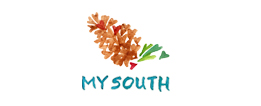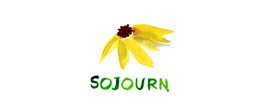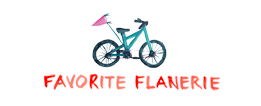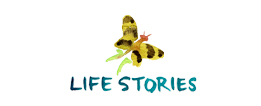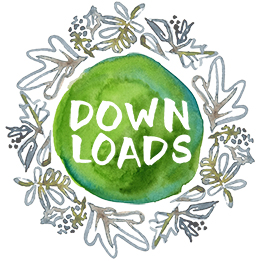I’m making my way through the archives in my collection of “vernacular” type — or hand-painted letters and signage. It’s a secret obsession of mine that I’ve been slowly sharing on Plop! Clearly, “decay” isn’t limited to the urban environment, but you have to admire the efforts in repurposing in RaDonna’s signage.

Archive for January 2011 – Page 3
I still can’t believe we’re already ten days into 2011. Can you? Sometimes I think it’s easy to let January slip by us as we settle back into normal routines after holiday fun and traveling. It’s easy to do with the marketing efforts as well. I don’t want to do that! I want to begin right now taking 2011 by storm. Last week I shared the first half of my top 10 recommended Marketing Moves for 2011. Some of those recommendations, like an effective logo and a solid website, took business promotional efforts back to the basics. Some moves, like a “yes” mentality and a well-told story, were more toward the mindset variety in re-evaluating how we see the experience of our customers and how we communicate our story. For the second half of my list, I’ve included a few “essentials” that have made a big difference in my own marketing efforts as well as some that my clients are using.
6. Facebook Page — Yeah, I know. Why do I need a Facebook Page? I get that question a lot from both clients and colleagues. I also field a lot of questions about whether Facebook can be an effective marketing tool for a variety of businesses beyond the restaurant or retail sector. My answer is yes. And, I’ve included it as an “essential” because of how important it’s been in my own efforts to get the word out about a new company in the service industry called Small Pond Graphics. My business FB page has been invaluable in raising awareness among my existing network of colleagues and friends about my new business venture as well as in opening up opportunities for new business. And I don’t sell any specific products or make any widgets. My largest target audience is business-to-business, and FB has still given me solid marketing leads. That’s because every clientele whether direct consumers or business-to-business is made up of people. People want to work with people they know and people they feel they can make a direct connection with. Facebook provides that opportunity without the constraints of location.
7. A (Flexible) Plan — One of the biggest mistakes I see customers make in their promotional efforts is embarking on a marketing program without a clear plan. A clear plan requires setting goals that are specific and attainable, choosing marketing venues that match goals with the appropriate target audience, and executing the logistics effectively. If that plan isn’t in place, then you have no basis for determining whether marketing opportunities have the juice to make an impact on your bottom line. But, having a plan doesn’t mean being rigid. If you maintain a level of flexibility in your plans, you can keep a portion of your efforts (translation: your time and your budget) open for creative ideas or options that come along unexpectedly.
8. Multi-media Approach — Because your target audience absorbs information from many “channels” it’s important to consider relaying your marketing message in multiple channels as well. Yes, limiting your marketing venues to one place–a single brochure, just a website, or one print media outlet–can offer some exposure. But, repeating your message with a multi-media approach has exponential value in making a marketing impact. As you are making your marketing plan, consider overlapping messages through several channels like email campaigns, website features, social media as well as print media and face-to-face encounters.
9. Customer Database — Consumers today have an expectation that businesses and organizations are ready to make it personal when communicating their messages. Plus, potential clients have so many message flung their way that only the ones that are most immediate and most personal tend to rise above the fray. The starting point of meeting the new realities of customer interaction is developing a customer database. Gathering and categorizing information about your individual customers allows you to communicate with them consistently and in a meaningful way. It’s as simple as that. Start gathering email addresses, physical addresses and even information like birthdays and purchasing preferences today.
10. Partnerships — This particular marketing move has proven to be a very successful and inspiring effort for Small Pond Graphics over the last six months. That’s why I encourage it as an essential marketing move. It’s easy to think of your business as a lone wolf. But, those days are over. Conducting business focused on protecting yourself and your own control of the customer experience is outdated in today’s marketing climate. Partnering with other businesses you admire and respect can open up great opportunities for growth. Well-placed partnerships and collaboration allow you to expand your service offerings AND your customer base. Plus, I’ve found that working with smart people makes me smarter . Working with other creative people makes me more creative. It’s a win-win.
As my thinking on some of these 10 essential Marketing Moves grows, I plan to share a few more specific posts on their effectiveness as well as some stories from my own experience about their importance. Meanwhile, choose one and get started with making 2011 great for your marketing efforts!
“Sing!”
I took this picture last April. This little guy was making a ruckus outside my office window when I worked for Dux D’Lux Advertising and I was able to get a few shots. At the time, I wrote about him in this post over at EyeJunkie.com. My favorite part about this view is the fluffy feathers all mussed in his mid-song flutter. I guess sometimes that happens when you Sing!
In my last post I promised that January was Logo Month around the Small Pond. Logo designs are one of very favorite kinds of projects because they are usually about saying the most with the most simplicity. I love the challenge of that balancing act. I’m hoping to take time this month to share some thoughts and ideas about logos and the process of designing them. A business or organization’s logo is the center point in its marketing and branding efforts. You see them everywhere. From the golden arches to the favorite team to the swoosh, logos are one of the most recognizable elements of a company’s visual image. And, often times, they work to promote a company or product without our even realizing it. When you drive by those arches, you probably don’t consciously think “Why that’s a McDonald’s restaurant!” No, you just instinctively know it because you’ve seen the golden “M” so many times in so many places. That’s the power of a logo. In graphic design circles, we call it an “identity.” That’s because when used consistently, your logo really becomes something that identifies your business in the marketplace.
So what makes up a logo? For this month’s first themed post, I thought I would share what I consider to be the anatomy of a logo. Depending on the type of business, organization or product it represents, these various elements might be used to create the most appropriate and effective visual identity. To illustrate my point, let’s look at this logo I developed last year for a new life-coaching company. It shows three elements of a logo that I feel are important to consider when determining your visual identity. [Loved working with my friend Andrea on this project. Here’s her website!]
1. Wordmark
Simply put, the wordmark is your business name. But, it’s not just the words themselves. Your wordmark is the WAY the words are written. It includes the font style, the arrangement of words or letters, and even the color. You’ll notice from the example above the “Inside Voice Coaching” has a specific arrangement with different font and scale choices for each word. When used consistently, this arrangement will be perceived as a whole, rather than the individual words and letters. So even without actually reading the words, the target audience will recognize that it represents the coaching company.
It is very common for brands to have more than one arrangement for their wordmark. A good logo should be flexible enough to offer options that will work in both horizontal and vertical applications as well as large and small. However, the various arrangements of a wordmark should maintain a consistent look with similar font and color treatment.
2. Icons
The swoosh. It’s a visual element that represents Nike even when the word isn’t displayed. In fact, the swoosh may be even more widely recognized than any font that’s been used for the name of the company. Visual images have power. People are often drawn to “pictures” rather than words, especially given the number of words most people see every day. Creating an “icon” as part of your business or organization’s logo gives you an opportunity to tell a story about what you do or what products you offer. In the example above, both the figure of the man and the “talk bubble” serve as icons. They reinforce the entire business concept in a visual and more abstract way.
A logo design that includes one or more icons offers many branding opportunities that can be expanded throughout your marketing efforts. The icons provide additional components in your visual arsenal to make your brand visual even where your company name isn’t included. Icons might be used as bullet points or content cues on a website. They might adorn a shopping bag or a t-shirt. They might give that extra touch to the 2nd sheets of your printed letters. The list goes on.
3. Tag Line
It’s my word for the phrase you sometimes see adjacent to a logo offering more explanation. Marketing folks might call it a “positioning statement”. Not all logos require one, but in cases where the business concept is more abstract or where you want to expand the marketing message of a logo, it can be helpful. In the example above, the statement “promoting growth, change & development” offers a one-liner about the company philosophy. I usually recommend that a tagline be positioned in a logo so that it can be easily removed with the logo effectiveness still in tact.
Of course, not all these elements are used in every logo. I encourage my clients to look at what’s really necessary for representing their business across multiple marketing channels and over time. Sometimes the simplicity of a wordmark is all that’s needed to create the right image. Sometimes a tagline becomes redundant or overcomplicates. In these examples from past projects I’ve worked on, you’ll see that your logo’s anatomy doesn’t necessarily follow strict rules. Because one of the goals of a logo is to help your company or products stand out from the crowd, the priority is always communicating WHO you are and WHAT you do in an innovative way.
Leave your comments and questions about developing a logo here and I’ll offer my best expertise.
Last night I had the distinct pleasure of having Baby Girl help me cook dinner. It was a rare boy-free few moments when her brothers were engrossed in a movie in the living room, and she only had to share the counter with her juice cup and a pile of potatoes. She talked to me the whole time with brand new sentences and words and questions. She examined several of the spices with only a few spills. She offered suggestions on preparing the french fries. She counted the slices of cheese as we added them to the cheesy dogs. She giggled. She made faces. She “cooked.” It wasn’t the McCormick jars that made this a sugar and spice moment. With all the bittersweet and savory it entails, she’s becoming a little girl.
If you ask Baby Girl what she got for Christmas, she’ll say “truck.” Go figure. I’d like to go on record that no, Baby Girl did NOT get a truck for Christmas. She got a baby doll cradle with a baby doll to lie in it. She got puzzles–Mary Had a Little Lamb-themed, no less. She got a PINK tricycle with a flowery basket to go on it. But, no, not a truck.
It’s funny. Even at almost 2 1/2 years now, the “girl” part of Baby Girl still eludes me sometimes. And, sorry to state the obvious, but I’m a girl. I’m an only child, so I grew up just being a girl. But, admittedly, I’m not that much of a typical girl. I like feminine details on my clothes, I enjoy wearing makeup and perfume and bracelets and earrings, but I’m no fashionista. I love pretty dishes and setting a table with placemats. I like preparing dinner and special things for my kids, but I’m no Martha Stewart. My point, is that sometimes I’m a little challenged in the whole “girl” thing. At least the “girl” thing I see on the princess aisle of Walmart. So I guess Baby Girl gets it honestly.
When I see Baby Girl playing with her brothers, holding her own with the trains and car chases, I joke that “I need to get this girl some bows.” But seriously folks, maybe I need to get this girl some bows. I realize that I could quite possibly be the only woman in America whose 2 1/2 year old daughter has never worn a bow. Well, once. For daycare pictures last fall, her teachers saw a bow mistakenly placed in her cubby and put it in her hair for photos. When I first glanced at the proofs, my first thought wasn’t “Awww,” it was “Who is this child in the bow?” Sigh. “Girl” challenged, I tell you.
The cards are stacked against me in this whole girl thing with Baby Girl. After all, she IS the youngest with two older brothers who probably define the term “boy.” And, being the youngest, she is more than eager to do whatever they are doing as if she somehow needs to catch up. “Whatever they’re doing” usually means some form of banging, car chasing or super hero shenanigans. Outside it means jumping, climbing, digging in the dirt and other lady-like stuff. And it’s not just at home. At “school” she’s been the one girl in a class of nine for quite a while now. Trucks are her life.
Still, Baby Girl is my kind of girl–more so every day. For all the trucks in her life, I see her hands drawn to the beads on my necklace. I see her eyes light up with her baby dolls. I see her tiny arms cradle them and mimic reading bedtime stories to them. I see her putting on her dressy shoes and running in them. I see her examining my jewelry box. I see her sorting spice boxes with that magical blend of sweet and tomboy I love. I see her becoming sugar and spice right before my eyes.
When I wonder about what a little girl should be, when I worry about showing her what little girls do, I see her full of joy and energy. I see her uninhibited by the constraints of what girls wear or play. I see her shout as loud as she can. I see her whisper playfully. I see her comfortable with train tracks or baby blankets. I see her running with the boys as if she can. Because she can. I see her sneaking into my makeup drawer, with eyeliner on her face. And I think, “that’s my girl.”
![]()
 Hello & welcome! I’m Haley Montgomery, and I’m the designer and owner of Small Pond Graphics. I sometimes fancy myself a frog kisser— a documentarian coaxing poignant moments from unexpected places. This blog has evolved from those moments.
Hello & welcome! I’m Haley Montgomery, and I’m the designer and owner of Small Pond Graphics. I sometimes fancy myself a frog kisser— a documentarian coaxing poignant moments from unexpected places. This blog has evolved from those moments.
The small Pond FIELD GUIDE is part diary, part sketchbook, and part wish list – an archive of ordinary wonders. For years, this space has housed my stories – creative ideas, vintage inspiration, our forays into curious places, and the simple artifacts of quiet of conscious living. Through watercolor, photography, and illustrated tales, these pages uncover the blessing of ordinary days and the wonder found in authentic places and pursuits.
I invite you to open the boxes.
Peek into the drawers.
Rustle through the pages.
I’m honored to have you here.
![]()
![]()
![]()
![]()

© Haley Montgomery for Small Pond Graphics.
All rights reserved.
Sharing of photos and images from this site is acceptable, provided that proper crediting links are included. No downloadable content may be distributed without written permission. All art is a gift forward. Please support designers, creators and makers everywhere by respecting copyright ownership of creative property.
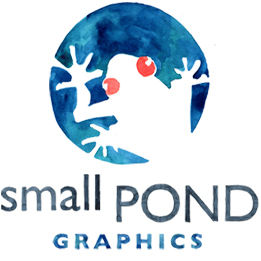
NEED A FROG KISSER?
Phone: 662.312.4001
Contact Haley to dive in







